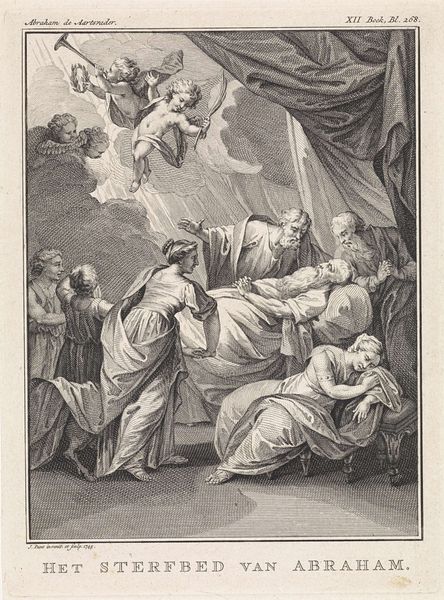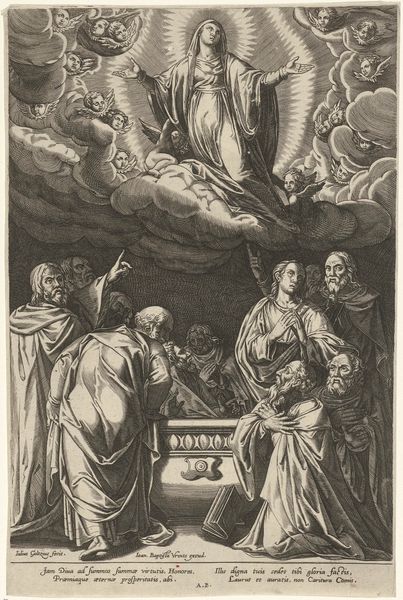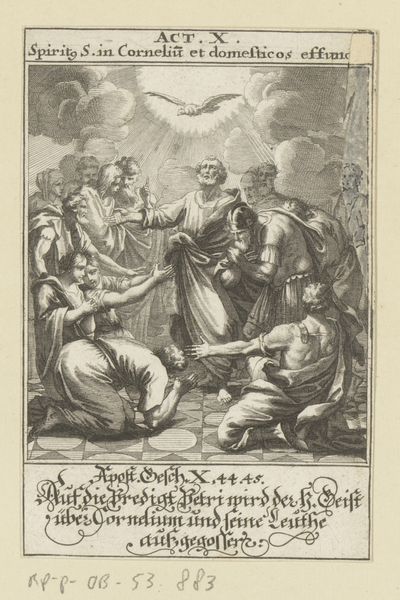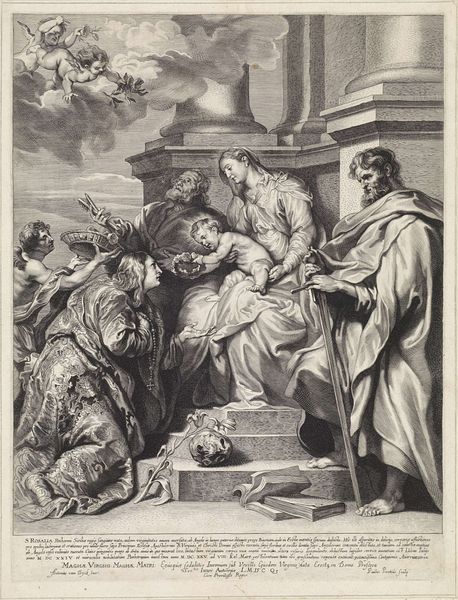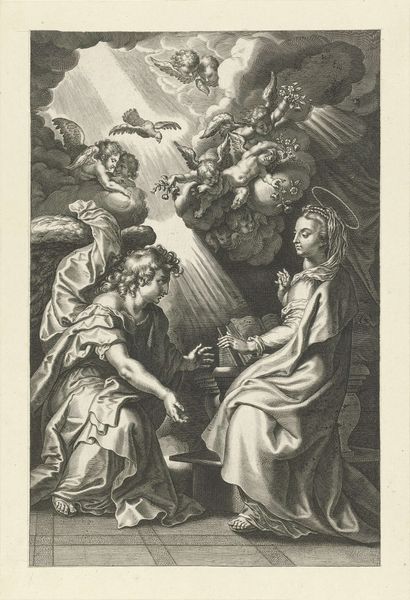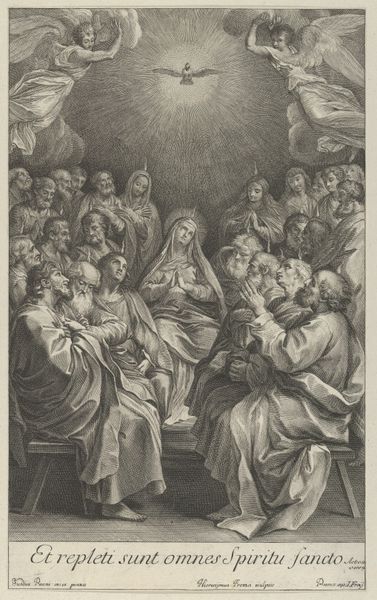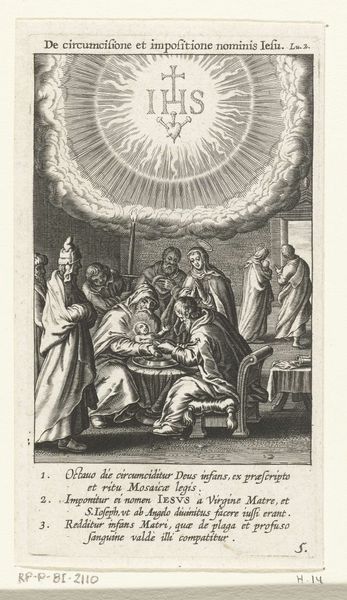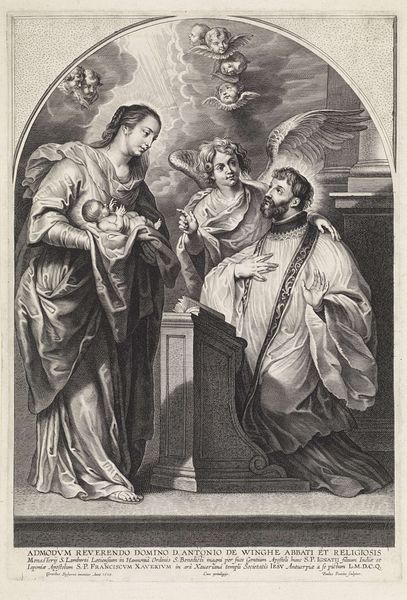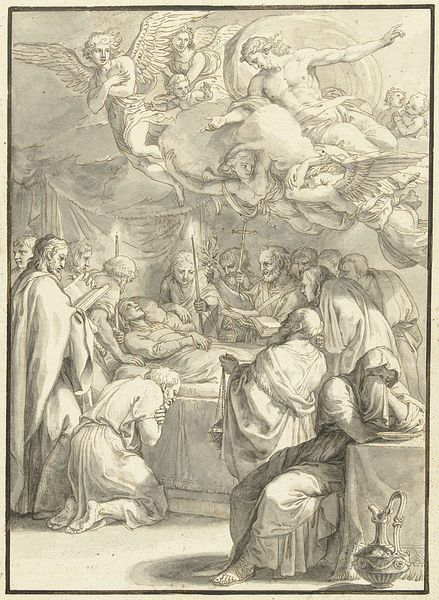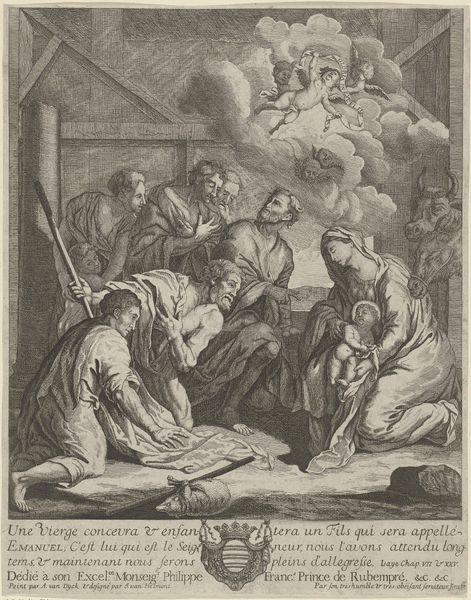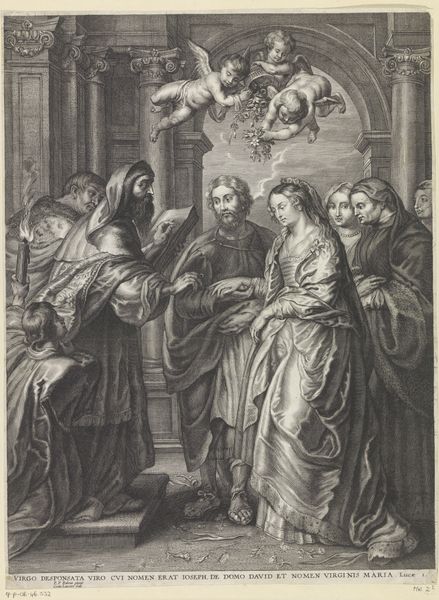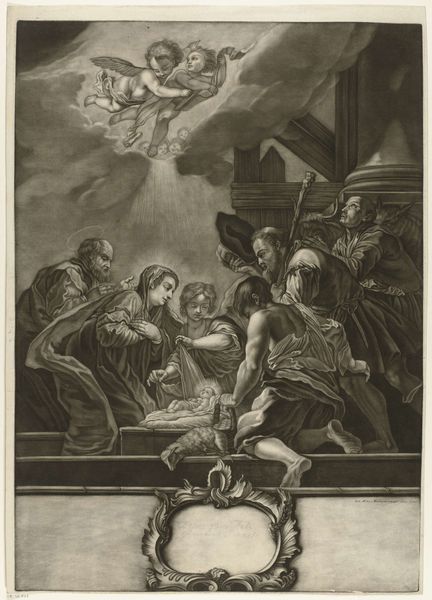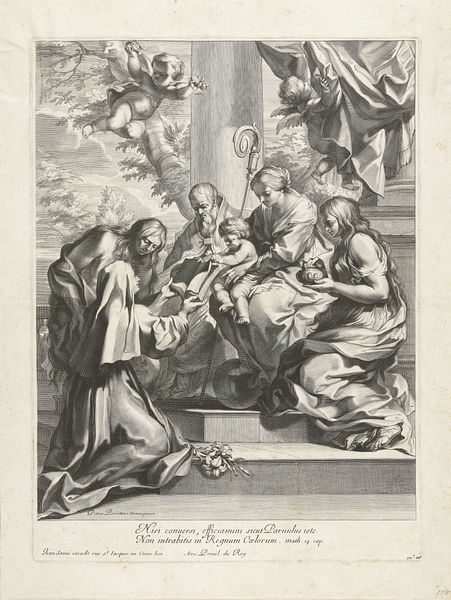
print, engraving
#
baroque
# print
#
figuration
#
history-painting
#
engraving
Dimensions: height 505 mm, width 390 mm
Copyright: Rijks Museum: Open Domain
Curator: Here we have "Uitstorting van de Heilige Geest," or "The Descent of the Holy Spirit," an engraving by Cornelis van Caukercken dating from somewhere between 1640 and 1680. What strikes you immediately? Editor: The intense rendering of the figures really draws me in. It's so theatrical. All those eyes looking upward, and those textures created purely with line. What kind of labor went into achieving this range of dark and light? Curator: Absolutely, let's delve into that. This print captures a pivotal moment from the Bible, Pentecost, when the Holy Spirit descended upon the apostles and Mary. Think about the historical and theological implications. They were suddenly empowered with the ability to speak in different languages. What narratives are made newly accessible by understanding the artwork as intersectional? Editor: And it's not just the narrative itself, but the means of reproducing that story that interests me. Engraving is a highly skilled craft. The density of lines creates an almost tactile experience. I wonder about the accessibility of prints like this—who was commissioning them and for what purposes? Was this a form of religious instruction? Decoration? Political messaging? What do you make of the textual information surrounding the image itself? Curator: It certainly served multiple functions. In this case, this print commemorates someone important in the Cistercian Order, perhaps to celebrate or solidify his position. By circulating images like these, it solidifies shared beliefs within religious networks, and by including the information we see at the bottom, there may have been some personal message embedded for those in the know. Editor: So, this wasn’t just an aesthetic object. It was a tool, functioning within social and economic structures. Knowing the production processes – the materials, labor, and intended use - makes me rethink how we value it today. Curator: Yes, shifting our understanding toward appreciating it both as a material object deeply embedded in its context and a vessel containing a rich, symbolic history allows us to see it with new eyes. Editor: It's fascinating to consider all the hands and contexts involved. Curator: Indeed, the multiple layers invite a more profound appreciation.
Comments
No comments
Be the first to comment and join the conversation on the ultimate creative platform.

